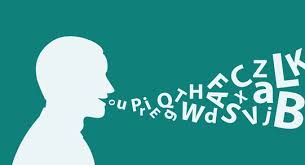
My Dialect and Native Language
Order Instructions:
Now that we have talked about dialects vs. languages and dialect features in class, try to give a linguistic profile of yourself. Tell us what language you speak natively (or languages, if you grew up bilingual), and then explain what dialect of that language you speak, and give some information about the dialect (for example, is it is a regional dialect, an ethnic dialect, etc.) and who else speaks it. Then try to come up with some specific examples of dialect features that are present in your speech that are typical of that dialect. Concentrate not on just lexicon, but also on phonology and syntax. Is there anything specific to your pronunciation as opposed to a mainstream version of the language? Any specific grammatical constructions you are using, which are not part of the mainstream? Has anyone ever commented on your dialect? When traveling to a different place have you ever noticed your own speech differing from that of other people? If you could change your dialect, would you?
For the purposes of this assignment, it does not matter whether you are a native English speaker or not. Talk about your native language, and compare your dialect with the features of your native language!
I need Chinese mandarin as my native language,and any one of the Chinese dialect is ok.
SAMPLE ANSWER
My Dialect and Native Language
The Chinese mandarin happens to be my native language, but I also learnt English right from my early stages in school. I have since grown up as a bilingual with spoken and writing skills in both languages. Chinese Mandarin in general is a tonal language with about 3000 different characters (Ross, Chen, He, & Ma, 2014). Mandarin is a group of varieties of Chinese languages that are spoken across the northern and southwest China. Beijing dialect is the language that I speak. The Beijing dialect is spoken in the Beijing region and City. Beijing Mandarin is basically the root of the standard Mandarin but its usage is greatly limited within the confines of the Beijing region.
The Beijing dialect is consistent with most natives, and greatly employs the ‘er’ sound at the end of words. This accent also tends to enunciate its tone with what I can describe as authority. In some sense, I find it a melodious way of speaking the Mandarin. Again, people from the north will often utter “mei shi’er” as a way of saying “mei guan xi” which people from the south are likely to find perplexing. This aspect of the Beijing accent usually makes it very easy for those who are conversant with the language to recognize and comment on my accent.
As Wang and Qin, (2014) note, the most distinct lingual features of the Beijing accent are the tonal and sound variations. For instance, ”言語一聲兒“ is pronounced as (yuan2 yi yi4 shengr1) instead of the (yan2 yu3 yi2 shengr1). It has a different accent and many other lexical differences from the other dialects.
The phonology structure of the Beijing dialect syllables comprises of a nucleus with a vowel (a monophthong, triphthong, or a diphthong) proceeded by an onset (which can be a single consonant, zero onset, or a consonant + glide) followed by a coda consonant (Wang and Qin, 2014). The tone can also be carried by a consonant. Most syllables also tend take the form of open syllables meaning that they have no coda. The number of sounds in the Beijing dialect varies from that of Mainstream Mandarin. Each of the syllables can be pronounced with three to six distinct pitch contours which denote different morphemes. Consequently, the number of tonal contrasts in Beijing dialect differs from the other dialects because it has fewer distinctions (Ross et al., 2014).
Like the Chinese language, Beijing dialect is a very analytic language that has almost no inflectional morphemes. Indeed, I find it similar to English in the sense that it follows a similar structure of sentence that frequently forms sentences in the subject-predicate order. For instance, the predicate may be an intrusive verb, transive verb that is followed by the direct object, and a linking verb that is followed by a predicate normative. Additionally, the writing system for the Mandarin dialect is founded on a series of written logograms. When communicating with members from the other parts of the country such as Henan, Sichuan, Shandong, Jiangsu, and Zhejiang, one notices the difference in terms of accents which are quite distinct. This is because the vocabulary of the Beijing dialect excludes all slang and other regionalism elements. Again, some colloquial words in this dialect are not present in the standard Mandarin Chinese and as such may not be comprehended by others from other regions away from Beijing. I find the Beijing dialect and the Mandarin in general a very rich and interesting language. There would be no intent for me to change the language in any way, instead, I would rather strive to learn more about the language.
References
Ross, C., Chen, P., He, B., & Ma, J. (2014). Modern Mandarin Chinese Grammar Workbook. New York, NY: Routledge.
Wang, K., & Qin, H. (2014). What is peculiar to translational Mandarin Chinese? A corpus-based study of Chinese constructions’ load capacity. Corpus Linguistics & Linguistic Theory, 10(1), 57. doi:10.1515/cllt-2013-0020
We can write this or a similar paper for you! Simply fill the order form!




